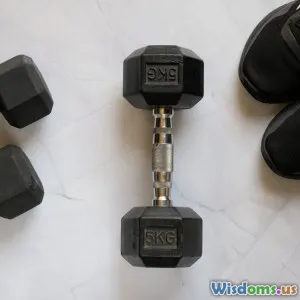
What To Know About At Home Full Body Circuits
34 min read A practical guide to at-home full body circuits: benefits, equipment, structure, timing, form cues, progressions, safety, and sample templates for all fitness levels. (0 Reviews)
At-home full body circuits are one of the most efficient, adaptable ways to build strength, improve cardiovascular fitness, and boost energy without leaving your living room. They turn limited space and minimal equipment into a complete training system. Whether you are a beginner who wants clear guidance or an experienced exerciser looking to optimize, knowing how to plan, progress, and perform circuits at home can be the difference between a program that fizzles out and one that keeps you getting better week after week.
Below is a comprehensive playbook: what to do, why it works, and how to tailor circuits to your schedule, your space, and your goals.
What is a Full-Body Circuit?

A full-body circuit is a sequence of exercises performed back-to-back with minimal rest, usually targeting multiple movement patterns and muscle groups within one round. After one round, you rest briefly, then repeat the circuit for a set number of rounds or a set time.
What makes it different from random workouts is the intent and structure: you select exercises that complement each other, set work and rest intervals to match your goal, and ensure total-body coverage. This structure allows you to accumulate meaningful training volume in less time.
Key terms you will see:
- Work interval: how long you perform an exercise (e.g., 30 seconds).
- Transition: a short buffer to move to the next station (e.g., 10–15 seconds).
- Round: one pass through all exercises in the circuit.
- Work-to-rest ratio: how long you work versus how long you rest (e.g., 40:20 means 40 seconds work, 20 seconds rest).
How circuits differ from HIIT: HIIT focuses on near-maximal intensity intervals with full recoveries (e.g., 30 seconds all-out, 2–3 minutes rest). Circuits can vary in intensity and often use moderate to vigorous effort with shorter rests, combining strength and conditioning in a single session.
Why circuits are perfect at home:
- Time efficient: 20–35 minutes is often enough for a complete workout.
- Flexible: use bodyweight, household items, or small equipment.
- Engaging: frequent exercise switches keep you mentally fresh and reduce monotony.
- Measurable: you can track rounds, reps, work time, or heart rate to see progress.
Benefits You Can Actually Feel and Measure
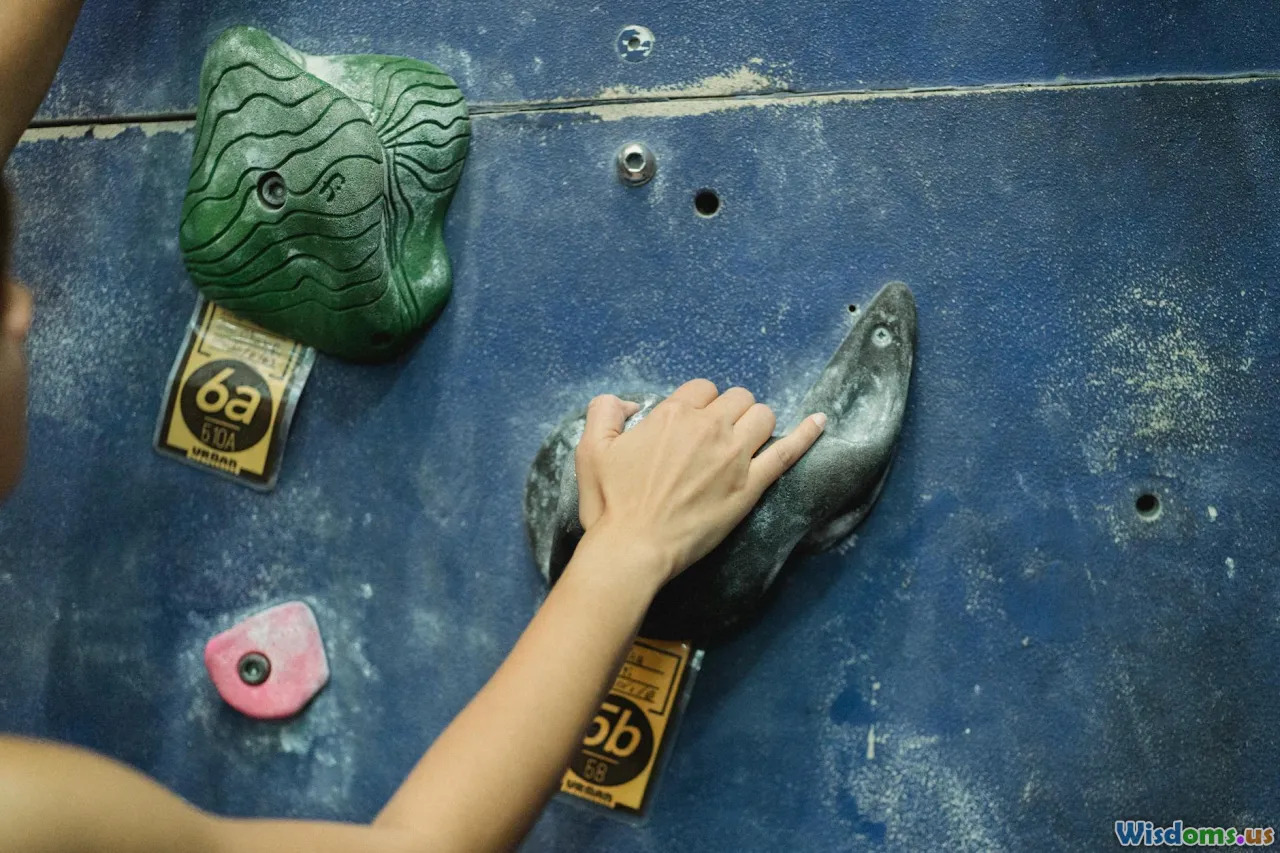
- Cardiovascular fitness: Circuit formats drive the heart rate into moderate-to-vigorous zones for extended periods, improving stroke volume and VO2-related markers. Studies comparing circuit training to traditional cardio show similar improvements in aerobic capacity when intensity is matched.
- Strength and muscular endurance: Alternating movement patterns (push, pull, squat, hinge, lunge, core) creates sufficient volume to build muscle and durability with minimal equipment. Slower tempos and unilateral work amplify the challenge without heavy loads.
- Metabolic boost: After a vigorous circuit, excess post-exercise oxygen consumption (EPOC) can modestly elevate calorie burn for hours. It is not a magic multiplier, but combined with regular training and nutrition, it supports body recomposition.
- Mobility and coordination: Multi-planar exercises and dynamic warm-ups improve joint range, stability, and movement skill, making daily tasks easier and reducing injury risk.
- Mental health: Short, intense sessions reliably elevate mood and sharpen focus thanks to endorphins and improved autonomic balance. For people juggling work and family, the short barrier to entry helps maintain consistency.
What you can measure:
- Resting heart rate trending downward over weeks.
- More reps in the same work interval at the same perceived effort.
- Shorter recovery time between rounds (heart rate drops faster).
- Progression from kneeling to standard push-ups, or split squat to assisted pistol, etc.
- Denser sessions: more total work in the same or less time.
Equipment: From Zero Gear to Smart Upgrades
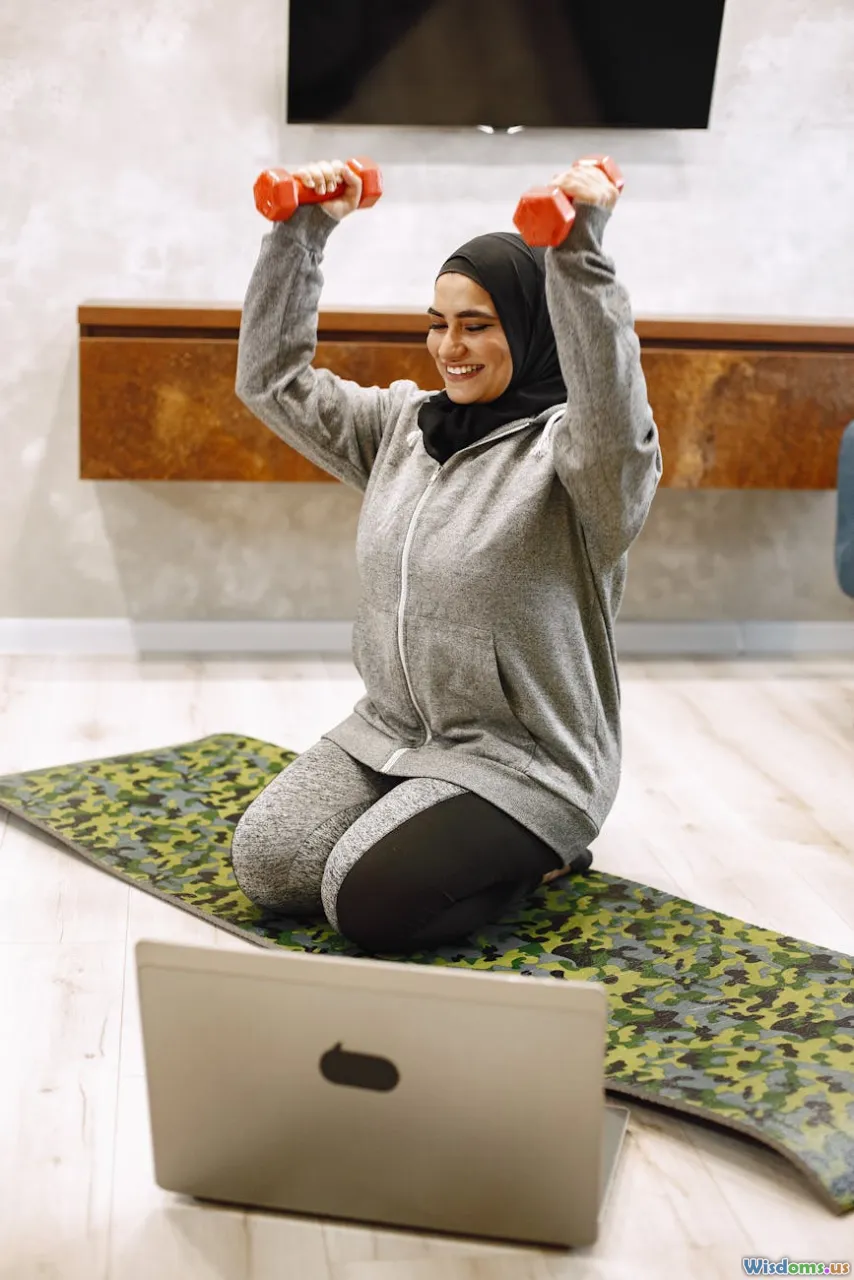
You can run excellent circuits with nothing but your bodyweight. That said, a few budget-friendly items multiply your options.
No equipment needed:
- Bodyweight staples: push-ups, air squats, glute bridges, reverse lunges, hip hinges (good mornings), planks, bear crawls, mountain climbers, burpees, hollow holds.
- Household stand-ins: backpacks loaded with books, water jugs as dumbbells, towels for sliders on smooth floors, a sturdy chair for step-ups or dips.
Nice-to-have upgrades:
- Resistance bands: loop bands for glute activation and pull-aparts; long bands for rows, assisted pull-ups, and presses.
- Adjustable dumbbells or two fixed pairs: lighter pair (5–15 lb/2–7 kg), heavier pair (20–45 lb/9–20 kg) based on your level.
- A suspension trainer or gymnastic rings mounted to a door or beam (for rows, fallouts, face pulls, single-leg work).
- A yoga mat for grip and joint comfort.
Good-to-great investments, depending on space:
- Kettlebell (12–24 kg for many men, 8–16 kg for many women, adjust as needed).
- Pull-up bar (door-mounted if safe) or a freestanding unit.
- Jump rope for low-space conditioning.
Noise and neighbor considerations:
- Use a thicker mat or interlocking foam tiles.
- Swap jumps for low-impact options (step jacks, fast marches, squat to calf raise) if sound carries.
Designing a Safe and Effective Circuit
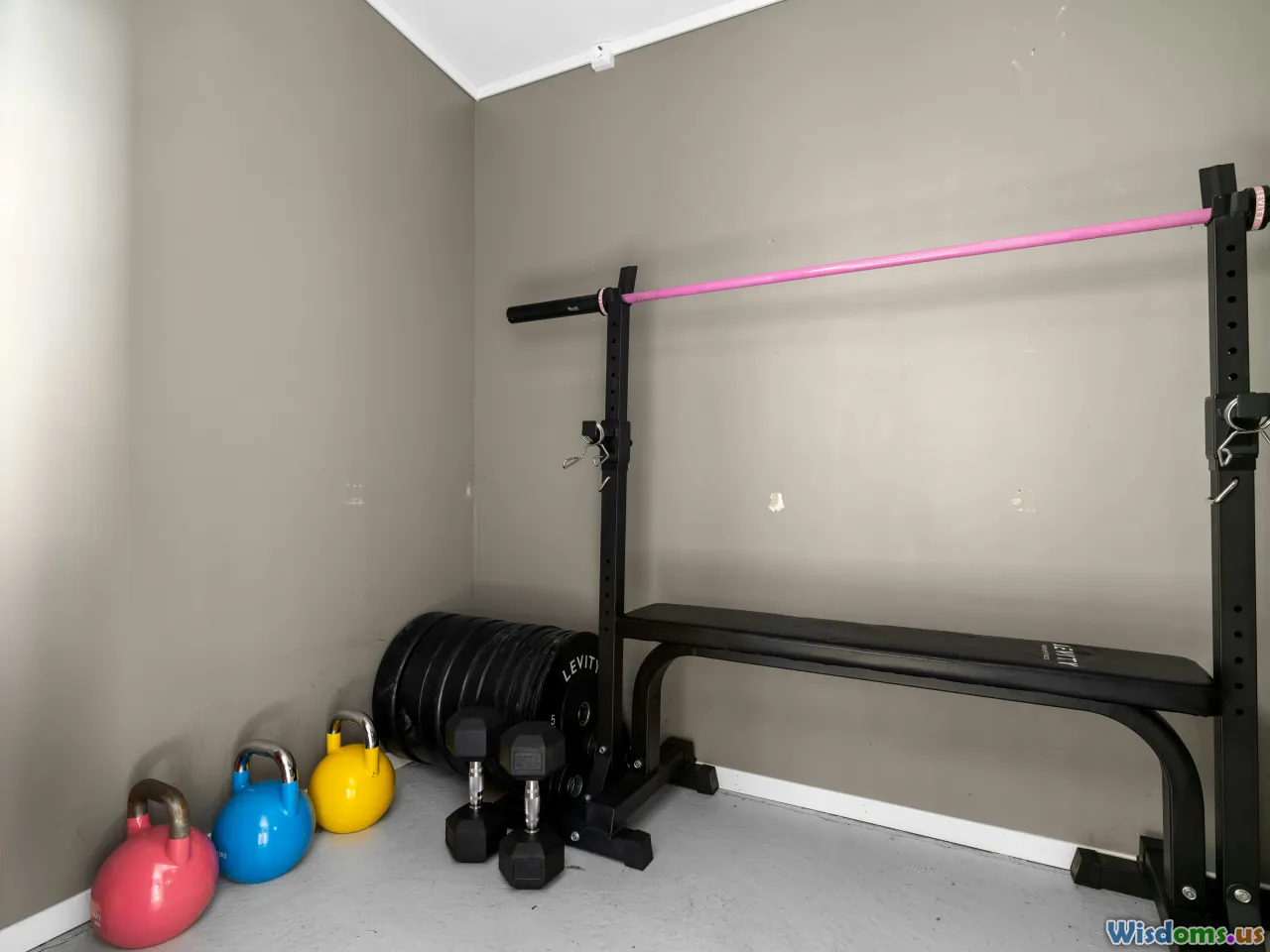
Start with movement patterns rather than body parts. A balanced full-body circuit hits:
- Squat or lunge pattern (knee dominant)
- Hinge pattern (hip dominant)
- Push (horizontal or vertical)
- Pull (horizontal or vertical)
- Core (anti-extension, anti-rotation, anti-lateral flexion)
- Locomotion or carry (if space allows)
Pick 5–8 exercises that cover these. Then choose a structure:
- Time-based: 30–45 seconds work with 15–30 seconds transition; 3–5 rounds.
- Rep-based: 8–15 reps per exercise; move station to station; rest 60–90 seconds between rounds.
- Mixed: the strength moves are rep-based, the cardio moves are time-based.
Work-to-rest guidelines by goal:
- Fat loss and general fitness: 30–45 seconds work, 15–30 seconds rest; heart rate mostly in 70–85% of max; 20–35 minutes total.
- Strength emphasis: longer rests after heavy patterns, keep reps crisp; superset push/pull and hinge/squat; 3–5 rounds.
- Conditioning emphasis: shorter rest, careful exercise sequencing to avoid technique breakdown.
Progression levers:
- Volume: more rounds or longer work intervals.
- Density: same work, shorter rest.
- Intensity: heavier loads or more demanding variations.
- Complexity: more challenging movement patterns or unilateral work.
- Tempo: slow eccentrics (3–5 seconds), pauses at the bottom of squats or in mid-row.
Warm-up and cool-down are non-negotiable. A smart warm-up increases temperature, activates key muscles, and rehearses movement patterns. Cool-down brings heart rate down and restores calm breathing.
Movement Menu: Exercises That Cover Every Major Pattern

Squat and lunge patterns:
- Air squat: Feet shoulder width, knees track over toes, sit hips between ankles, keep chest tall. Common error: collapsing knees inward; fix by pressing knees slightly outward.
- Reverse lunge: Step back, front shin vertical, torso tall. Regression: supported split squat holding a chair. Progression: forward lunge or walking lunge with load.
- Split squat: Static stance; lower with control. Progress: add rear foot elevation.
Hinge patterns:
- Hip hinge good morning: Hands on hips, push hips back, soft knees, neutral spine. Regression: wall taps with glutes. Progression: single-leg hinge (RDL) touching a target.
- Glute bridge/hip thrust: Drive through heels, ribs down. Progression: single-leg bridge.
Push patterns:
- Push-up: Hands under shoulders, body like a plank, elbows at ~45 degrees. Regression: incline push-up on a counter. Progression: tempo or feet-elevated push-up.
- Pike push-up: Hips high, aim forehead toward the floor for vertical pushing. Regression: hands on couch.
Pull patterns (great with bands or suspension):
- Band row: Elbows track close to ribs, squeeze shoulder blades together then down. Progression: single-arm row.
- Doorway towel row: Loop towel around a sturdy handle, lean back, pull chest toward hands. Test door safety first.
Core patterns:
- Plank variations: Standard forearm plank, side plank (anti-lateral flexion), dead bug (anti-extension), bird dog (anti-rotation).
- Hollow body hold: Lower back pressed lightly into floor; progress by extending legs and arms.
Locomotion/carry:
- Farmer carry with loaded bags or water jugs: Tall posture, walk slowly. If space is tight, do standing marches.
Cardio insertions that are joint-friendly:
- Marching high knees, step jacks, fast foot taps to a line, shadow boxing, rope-less jump rope (quiet).
Two Plug-and-Play Sample Circuits (Beginner and Intermediate)

Beginner 25-minute circuit (no equipment):
- Format: 35 seconds work, 20 seconds transition; 6 exercises; 3–4 rounds; 60–90 seconds rest between rounds.
- Exercises (in order):
- Sit-to-stand or bodyweight squat
- Incline push-up on counter or couch
- Hip hinge good morning (hands on hips)
- Reverse lunge alternating legs (use a chair for balance if needed)
- Forearm plank hold or elevated plank
- Marching high knees or step jacks
- Coaching notes: Keep breathing smooth; rate of perceived exertion (RPE) 6–7 out of 10. If form degrades, shorten the work interval to 25–30 seconds and extend the transition by 5–10 seconds.
Intermediate 30–35-minute circuit (minimal gear):
- Format: 40 seconds work, 20 seconds transition; 7 exercises; 3–5 rounds.
- Gear: one or two dumbbells or a medium kettlebell; loop band.
- Exercises:
- Goblet squat (moderate weight)
- Push-up (floor) or feet-elevated if strong
- Band or towel row (focus on mid-back squeeze)
- Hip hinge RDL with weight or single-leg bodyweight RDL
- Reverse lunge with one dumbbell held on one side (suitcase style); switch sides next round
- Dead bug or hollow hold (20 seconds on, 10 off, repeat within the 40 seconds)
- Rope-less jump rope or shadow boxing flurries
- Coaching notes: Keep reps crisp; if you cannot keep 2 reps in reserve by the end of each set, drop load or reduce work time. Aim for RPE 7–8.
Small-space adaptations:
- Replace lateral shuffles with in-place fast marches.
- Replace broad jumps with squat-to-calf-raise tempo reps.
- Use step-back lunges instead of forward lunges to avoid crowding.
Advanced Variations Without a Home Gym
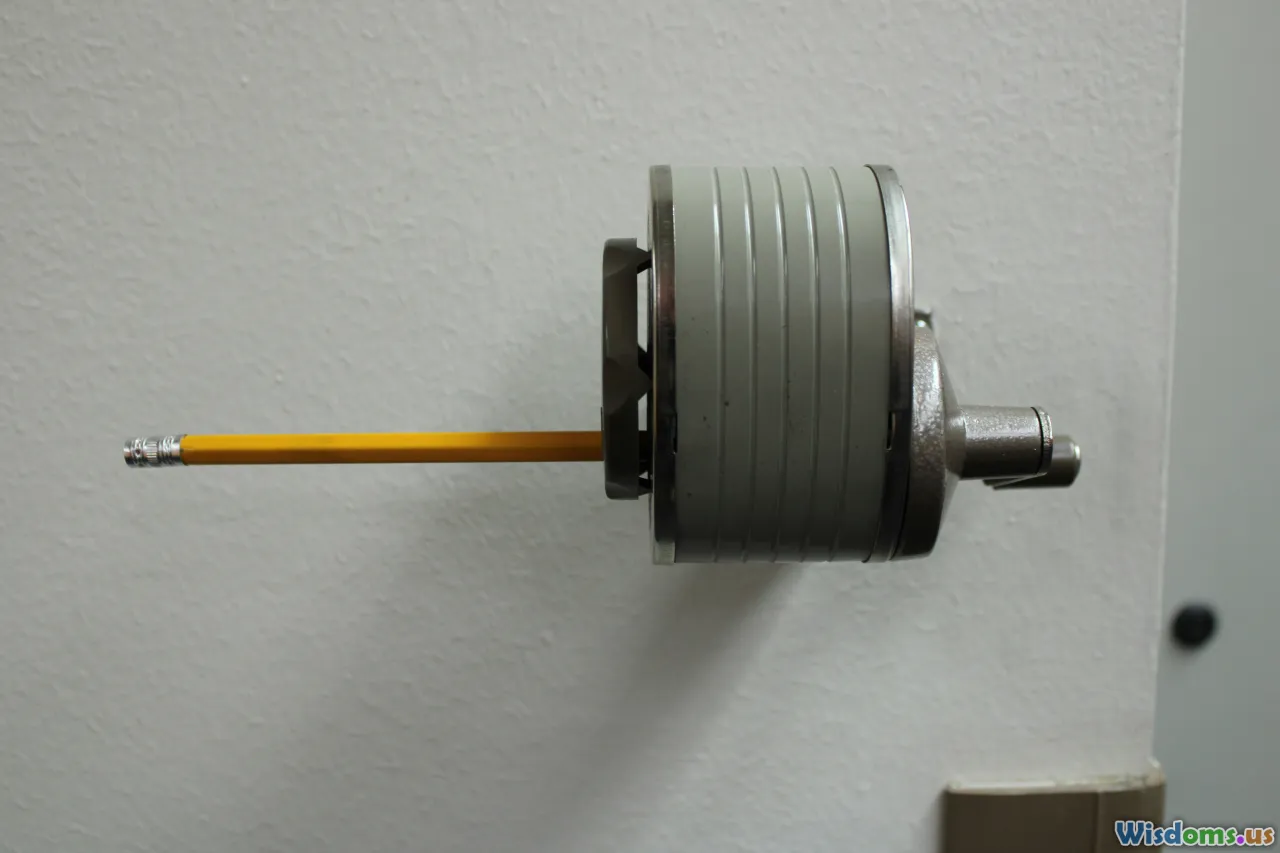
- Tempo manipulation: Try 3–1–1 squats (3 seconds down, 1-second pause at the bottom, 1 second up). This increases time under tension and stimulates growth with lighter loads.
- Unilateral dominance: Build circuits around single-leg and single-arm moves to challenge stabilizers and reduce strength imbalances. Example block: single-leg RDL, split squat, single-arm floor press, single-arm row, side plank.
- Density blocks: Set a timer for 8–10 minutes and cycle through 2–3 moves, accumulating as many high-quality rounds as possible while maintaining form.
- EMOM (every minute on the minute): Minute 1, 8–12 push-ups; minute 2, 10 goblet squats; minute 3, 30-second jump rope; repeat for 15 minutes. Finish early, rest until the next minute.
- Complexes: Use one weight for multiple moves without putting it down. Example: 6 reps each of RDL, row, clean, front squat, push press. Rest 2 minutes; repeat 3–4 times. Start light.
- Plyometrics with respect: If you have a forgiving surface and sound tolerance, add low-volume jump squats, lateral skater hops, or power step-ups. Keep reps low (3–6) and rests generous.
How To Warm Up and Cool Down Efficiently

Use the RAMP framework: Raise, Activate, Mobilize, Potentiate.
8-minute warm-up:
- Raise: 2 minutes of brisk marching or rope-less jump rope.
- Activate: 1 minute loop band glute bridges or clamshells; 30 seconds scapular wall slides.
- Mobilize: 30 seconds each of hip flexor stretch with glute squeeze, ankle rocks, thoracic rotations on all fours.
- Potentiate: 2 sets of 5–6 reps each of the main movements at a lower intensity, focusing on crisp technique (e.g., slow air squats, incline push-ups, band rows).
Cool-down (5–8 minutes):
- Light cardio 2–3 minutes to gradually drop heart rate.
- Breathing drill: 3–5 breaths, 4 seconds in through the nose, 6–8 seconds out, focus on ribs moving down and back.
- Mobility resets: couch stretch, child’s pose with side reach, figure-four stretch for hips. Move slowly and avoid forcing range.
Programming for Goals: Fat Loss, Muscle, Endurance, Longevity
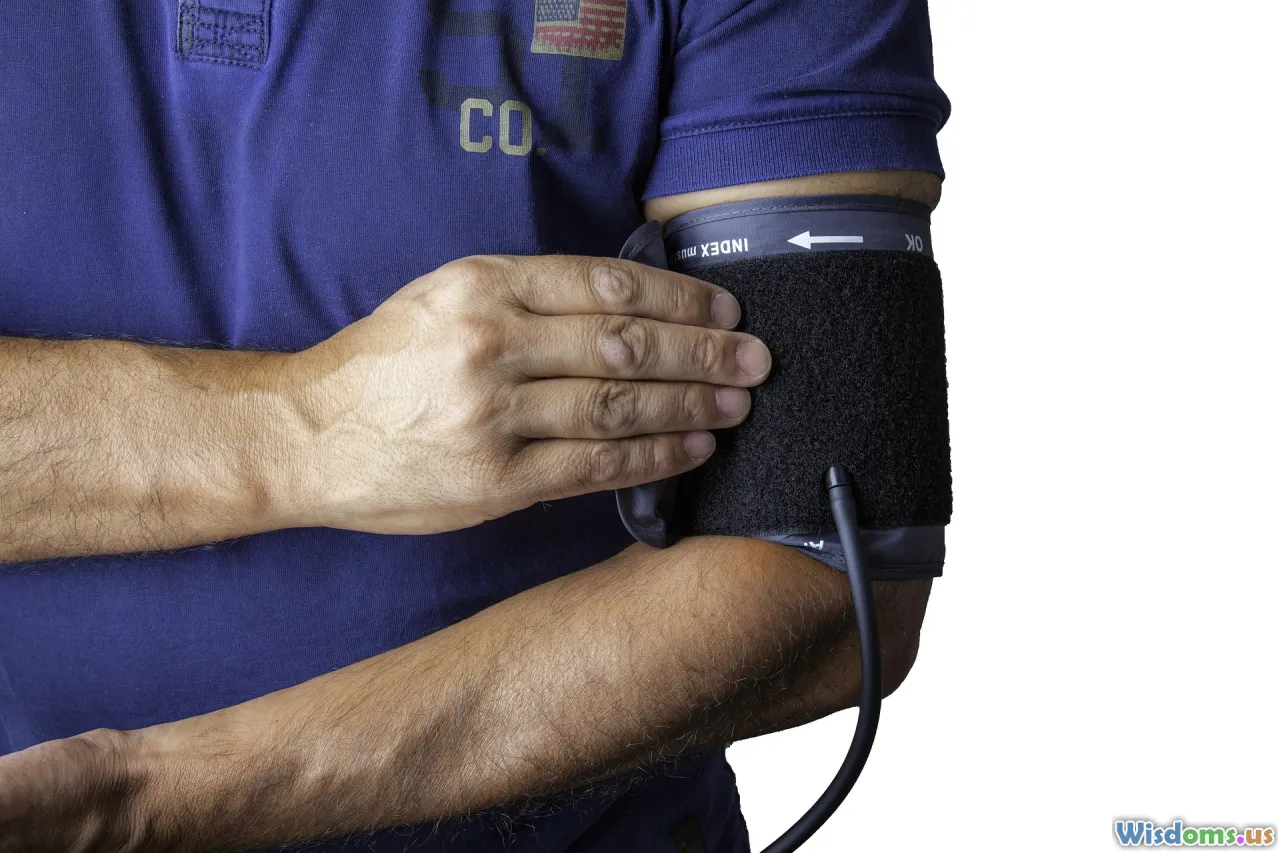
Fat loss focus:
- Frequency: 3–5 circuit days per week.
- Work-to-rest: 40:20 or 30:15; keep heart rate in 70–85% of max for most of the session.
- Emphasize big movements and short transitions to keep density high.
- Nutrition: modest calorie deficit and prioritize protein (see the nutrition section below).
Muscle building focus:
- Frequency: 3–4 circuit days plus 1 technique or mobility day.
- Prioritize tension: slower eccentrics, pauses, unilateral moves, and loads you can control for 8–12 reps.
- Longer rests after heavy sets (60–90 seconds) to preserve output.
- Track total weekly set volume per muscle group (start around 10–14 hard sets, adjust by recovery and progress).
Endurance focus:
- Frequency: 2–3 strength circuits plus 2 cardio sessions (low-impact steady state or intervals).
- Circuit design: mix strength with cyclical moves like rope, marches, or shadow boxing. Use longer work intervals (45–60 seconds) with moderate rest.
- Use EMOMs and threshold intervals to develop sustainable pacing.
Longevity and general health:
- Aim for consistent moderate effort with excellent technique.
- Mix low-impact cardio, mobility, and strength in each session.
- Keep at least one easy recovery day between demanding circuits.
- For most adults, total weekly activity targets include 150–300 minutes of moderate cardio or 75–150 minutes of vigorous cardio plus 2 or more days of strength work. Circuits can fulfill both if planned well.
Technique and Safety Essentials at Home

- Clear your space: remove clutter, check floor traction, and ensure pets and kids are out of the lane of movement.
- Test anchors: if you use a door anchor for bands or a pull-up bar, test it with light tension first.
- Footwear: if you are on a hard surface, wear shoes with grip; barefoot can work for hinges and squats if the surface is safe and you are used to it.
- Spine position: neutral, not hyperextended; brace lightly by exhaling and feeling ribs move down.
- Knee tracking: let knees travel over mid-foot, not collapsing inward; think push the floor apart on squats.
- Pain versus effort: effort burns, pain stabs. Sharp, localized pain or joint pinching is a stop sign. Modify or switch movements.
- Breathing: avoid holding your breath throughout the entire set; exhale on exertion. If you use short breath holds for bracing, release between reps.
- Medical considerations: if you have a known condition or are returning after illness or surgery, get clearance and ramp up slowly.
Tracking Progress With Minimal Tech

Track at least one of these:
- Reps per interval: how many quality reps you complete at a set work time.
- Heart rate: average and peak per session; how fast it recovers between rounds.
- RPE and reps in reserve (RIR): aim to finish most sets with 1–3 reps in reserve.
- Density: how many rounds completed in a fixed time block.
- Movement progression: incline push-up to floor push-up, band-assisted to full pull-ups, bilateral to unilateral.
Simple template you can write in a notebook:
- Date and session focus.
- Circuit list and weights or band tensions used.
- Rounds completed and perceived effort.
- One win and one tweak for next time.
Common Roadblocks and How to Fix Them
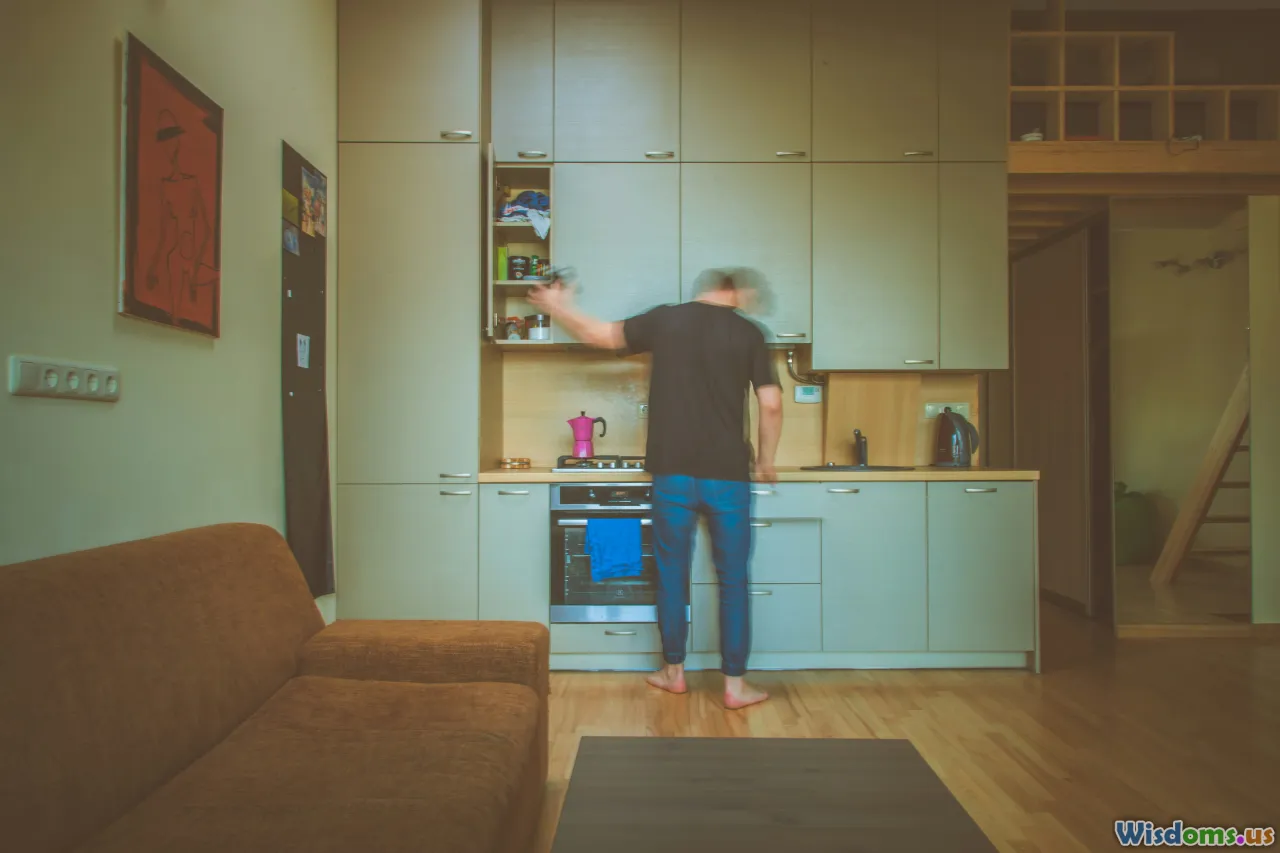
- Time crunch: run 10–15 minute micro-circuits. Choose 3 moves and cycle EMOM for 12 minutes. Consistency beats occasional marathons.
- Boredom: rotate themes weekly (push-pull-hinge week, unilateral week, tempo week). Keep 60–70% of the circuit consistent so you can compare performance; change the rest.
- Plateaus: tweak only one variable at a time. Try adding a round, increasing load by 5–10%, or introducing tempo pauses.
- Soreness overload: reduce new exercise novelty; cap eccentric volume; add an easy recovery session with mobility and light breathing work.
- Space or noise limits: emphasize static holds, slow tempos, and unilateral moves. Swap jumps for fast marches and power steps.
Behavior strategies that work:
- Habit stacking: tack your circuit onto an existing routine, like after brewing coffee.
- Environmental cues: leave your mat and bands visible and ready.
- Implementation intentions: if-then plans, e.g., If my meeting runs late, I will perform the 12-minute EMOM instead of the 30-minute circuit.
- Minimum viable session: on tough days, commit to 5 minutes. Often you will do more, but even the 5-minute win maintains momentum.
Nutrition and Recovery That Support Circuits

Fuel smartly and your circuits feel better and produce better results.
- Protein: aim for roughly 1.6–2.2 grams per kilogram of body weight per day if you want to support muscle. Spread across 3–4 meals with 20–40 grams each depending on body size.
- Carbohydrates: useful for performance and recovery, especially if you train most days. Include fruits, whole grains, or starchy vegetables in meals before and after training.
- Hydration: drink water throughout the day; a simple check is pale yellow urine. For sweaty sessions longer than 45 minutes, a pinch of salt in water or an electrolyte mix can help.
- Pre-workout snack: 60–90 minutes before, combine a small carb source with some protein (e.g., yogurt and fruit or toast with nut butter). If you train early, a smaller option (banana) often suffices.
- Post-workout: aim for a balanced meal within a couple of hours—protein, carbs, and colorful produce.
- Sleep: 7–9 hours supports adaptation, appetite control, and mood. When sleep is short, consider reducing intensity slightly to protect recovery.
- Recovery tools: a 5-minute walk after circuits, easy mobility, light foam rolling on tight areas, and nasal breathing drills help downshift the nervous system.
Space-Saving Layouts and Noise-Friendly Options

- Vertical storage: hang bands and jump ropes on wall hooks; store dumbbells under a chair or couch.
- Define a training rectangle: even a 6-by-4-foot area can work. Keep a mat in place to reduce noise and slipping.
- Quiet swaps: replace burpees with squat to calf raise and a strong exhale; replace jumping jacks with step jacks; replace skater hops with lateral step-overs.
- Floor-friendly moves: bear crawls forward and back, slow mountain climbers, tall-kneeling presses with bands, wall sits.
Working Around Aches and Old Injuries

- Knees: shift some squat volume to hinges and glute bridges; use more reverse lunges than forward lunges; keep shin vertical; try box squats to control depth.
- Shoulders: use neutral-grip pushing and pulling (palms facing each other), incline push-ups, and focus on scapular control with rows and wall slides.
- Lower back: prioritize neutral spine; do more anti-rotation core (dead bug, Pallof press with band); hinge with shorter range until comfortable.
- Wrists: use knuckle push-ups on a mat or push-up handles; adjust hand position to neutral.
General rule: movement should not provoke sharp pain. Choose a regression that allows good form and mild-to-moderate effort. If a sensitivity persists, consult a qualified professional.
Frequently Asked Questions

- How many days per week should I do full-body circuits? For most, 3–4 days is a sweet spot. If you train 5+ days, vary intensity and include easy days.
- How long should a session be? 20–40 minutes including warm-up is plenty for quality work at home.
- Can I build muscle with at-home circuits? Yes, if you push close to technical failure on sets, use progressive overload (tempo, unilateral focus, added reps or load), and eat enough protein and calories to support growth.
- Do I need cardio on top of circuits? Circuits can cover your cardio if you keep heart rate in moderate-to-vigorous zones. Still, easy-zone walks or cycles help recovery and general health.
- What if I only have 10 minutes? Use EMOM or density blocks. Example: minute 1, 10 push-ups; minute 2, 12 goblet squats; minute 3, 30-second march; repeat.
- How do I know I am working hard enough? Use RPE 6–8 for most sets. If you finish an interval and could not do more than 2–3 good reps, you are in the zone.
A 6-Week At-Home Circuit Plan You Can Start Today

Structure: 3 circuit days per week (e.g., Mon, Wed, Fri), 1 optional conditioning or mobility day (Sat), 2–3 easy recovery days.
Weeks 1–2: Learn and build base
- Warm-up RAMP sequence each day.
- Circuit A (Mon):
- Air squat 30 seconds
- Incline push-up 30 seconds
- Band or towel row 30 seconds
- Hip hinge good morning 30 seconds
- Forearm plank 30 seconds
- Marching high knees 30 seconds
- Rest 60 seconds; 3–4 rounds
- Circuit B (Wed):
- Reverse lunge 30 seconds
- Push-up (incline or floor) 30 seconds
- Glute bridge 30 seconds
- Pike hand-elevated push-up 30 seconds
- Side plank 30 seconds each side (alternate rounds)
- Rope-less jump 30 seconds
- Rest 60 seconds; 3 rounds
- Circuit C (Fri):
- Goblet squat or backpack squat 30 seconds
- Band row 30 seconds
- Single-leg RDL bodyweight 30 seconds each side
- Dead bug 30 seconds
- Fast step jacks 30 seconds
- Rest 75 seconds; 3 rounds
- Optional Sat: 20–30 minutes easy walk or bike + 10 minutes mobility.
Weeks 3–4: Progress volume and density
- Increase work to 35–40 seconds; keep transitions 15–20 seconds.
- Add one round to each circuit or increase load slightly if form is solid.
- Introduce one unilateral emphasis per session (e.g., suitcase reverse lunge, single-arm row).
- Keep RPE around 7–8; end the week with one slightly lighter day.
Weeks 5–6: Intensify selectively
- Choose two moves per session for tempo sets (3 seconds down, 1-second pause).
- Insert one EMOM finisher twice per week: 6 minutes alternating 10 push-ups and 12 goblet squats, or 20-second rope fast, 10-band rows.
- If recovery is good, shorten transitions by 5 seconds on one session to increase density; keep quality high.
- Deload last few days of week 6 by reducing rounds by 20–30%.
Weekly check-in questions:
- Are my reps improving or heart rate recovering faster between rounds?
- Do I feel persistent joint discomfort? If so, swap or regress that move next week.
- Is sleep and appetite stable? If not, reduce intensity and emphasize recovery.
When to Take It Outside

Outdoor circuits are a refreshing change and often cost nothing:
- Stairs: intervals of fast walk up, easy walk down; pair with push-ups on railings and step-down lunges.
- Park bench: step-ups, split squats, incline push-ups, triceps dips, Bulgarian split squats.
- Playground: inverted rows on low bars, hanging knee raises, band-assisted pull-ups.
- Weighted backpack: use for carries, squats, and hinges. Pack evenly with soft items; secure straps.
- Space-based conditioning: shuttle runs or brisk marches between two trees; lateral shuffles in a small zone.
Mind the surface and weather; warm up longer in the cold and hydrate more in heat.
Final Thoughts to Keep You Moving
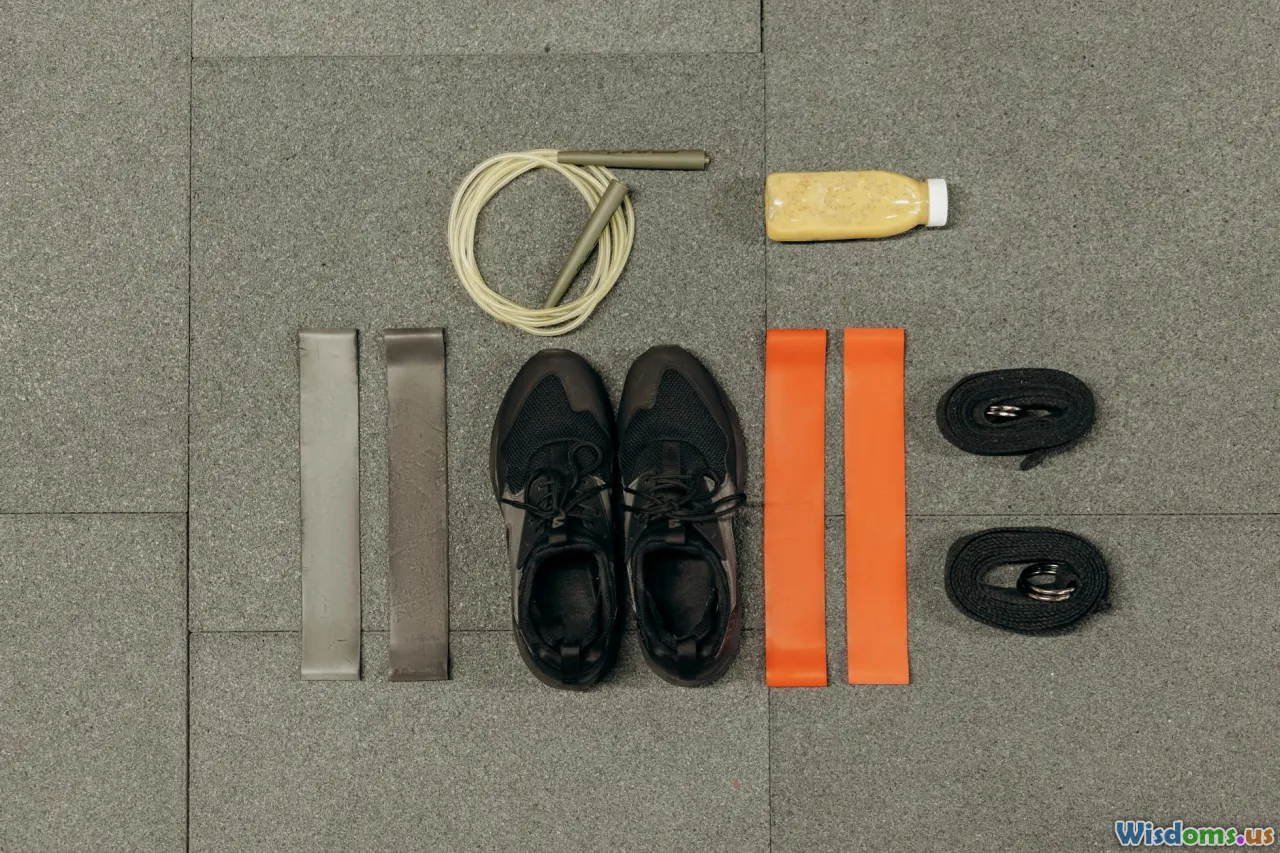
At-home full body circuits are more than a stopgap when the gym is closed—they are a flexible, evidence-informed way to keep getting fitter on your terms. Start simple, master quality movement, and progress one knob at a time: time, rest, load, or complexity. Keep notes, celebrate small wins, and design your environment so that exercising is the easy choice.
You do not need perfect conditions to begin. You need one clear plan, a small square of floor, and the willingness to show up for 20–30 minutes at a time. Let your circuits evolve with you, and they will deliver strength, stamina, and confidence that carry well beyond your workout mat.
Fitness Strength Training HIIT Injury Prevention bodyweight exercises Fat Loss Home Workouts Resistance Bands circuit training dumbbell workout AMRAP EMOM mobility warm-up cool-down work-to-rest ratios movement patterns progressive overload low-impact modifications muscular endurance heart rate zones RPE timer apps form cues
Rate the Post
User Reviews
Other posts in Strength Training
Popular Posts










